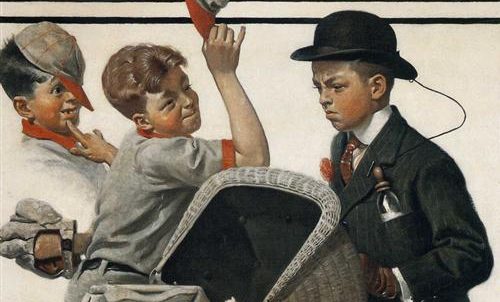The Second Cold War? The Clash Of The Eagle And The Dragon.
In Early and Mid-1900s, China was one of the least developed nations in the world. China maintained policies that kept the economy very poor, stagnant, centrally controlled, vastly inefficient, and relatively isolated from the global economy. Then something drastic happened which changed the country’s course from being an isolated and poor country, to being a near-global power that it is today. China has became such a power, it could (in the near future) rival the United States in almost every avenue.
The Rise of the Dragon
After brutally fighting against the Japanese in World War 2, the Chinese were left impoverished and most importantly divided. China was once again plunged into a civil war in which the Communists (led by Mao Zedong) won against the Nationalists, who escaped to the island of Taiwan. After the Civil War, China was set on rebuilding itself by enacting social and economic reforms and receiving help from a fellow Communist nation, the Soviet Union. However, there was a split between China and the Soviet Union due to differing opinions which made China practically isolated from both the West and other communist nations, which made them enact drastic measures to rebuild itself. Two of these were the Great Leap Forward and the Cultural Revolution, which were made to industrialize and modernize China. However, in the end, these attempts caused famines which killed millions and made the economy fail. All seemed to be dire for China and no other nation was really taking it seriously.
In 1979, China finally opened up to foreign trade, investment, and implementing free-market reforms. This has set the dye for China’s rise, as its economy was one of the fastest-growing in the world. After a few decades, China has become the world’s largest economy (on a purchasing power parity basis), merchandise trader, manufacturing, and holder of foreign exchange reserves. One important factor from China’s rise is its connection to the United States of America, as China became the United States’ largest merchandise trading partner, the biggest source of imports, and the third-largest U.S. export market. After 2015, China’s economy has significantly slowed down compared to its 2000’s numbers, but still maintains stable growth compared to the United States. China is on the the global stage.
The Eagle’s Watchful Eye
Before President Obama and Trump had taken office, previous presidents did not see China as a competitor but as an economic ally that was to benefit each other. However, in 2011, President Obama enacted a move in which the United States and eight other nations have reached an agreement on the Trans-Pacific Partnership—a multinational free trade agreement which was made to counter China’s growing influence. These little steps mark the first spark of tensions that would further expand during President Trump’s term. In 2018, President Trump and his administration announced sweeping tariffs on Chinese imports in response to the alleged theft of U.S. technology and intellectual property. China also responded with retaliatory measures in early April on a range of U.S. products which sparked the so-called “Trade War.” The Trade War intensified throughout 2018-2020, as new tariffs and labels are being thrown toward each country.
In 2020, the Coronavirus entered the United States and hit it hard, which made its economy recede and unfortunately, hundreds of thousands of deaths. China, on the other hand, handled the pandemic quite “well” and kept the numbers low through hard lockdowns, although others report that the numbers are false. Nevertheless, the economy of China is doing much better and is predicted to overtake the United States. The president-elect, Joe Biden, is trying to take a new approach to China than what the previous president did. Biden’s plan is to focus more on diplomacy and cooperation in areas of mutual interest. As recently as May 2019, Biden said China was, “not competition for us,” since it had domestic problems to deal with. Biden has also stressed the need for the United States to lead international organizations like the United Nations and the World Health Organization. However, there are some claims (disputed) that say that Biden, as the vice president, wanted to normalize trade with China and wanted to normalize ties between them. In the end, we can conclude that Biden’s plan is radically different from Trump’s plan and will most likely include greater diplomacy and better ties with other nations to counter China indirectly.
The rise of China has certainly shaken the world by a drastic measure.“Let China sleep, for when she wakes, she will shake the world,” uttered Napoleon, the French Emperor, some 200 years ago. The warning he made rang hollow for most of that time, as China suffered through the wars, social upheavals, and revolutions of the 20th century. Just by 2030, China is predicted to overtake the United States economically. China’s recent projects like, the Belt and Road, shows that China wants to expand its influence throughout the world, and its territorial disputes (Taiwan, Kashmir, etc) show that they want to expand. The response of Joe Biden to China will determine if China will become the late 21st-century hegemon, or if the United States will manage to keep its throne.











